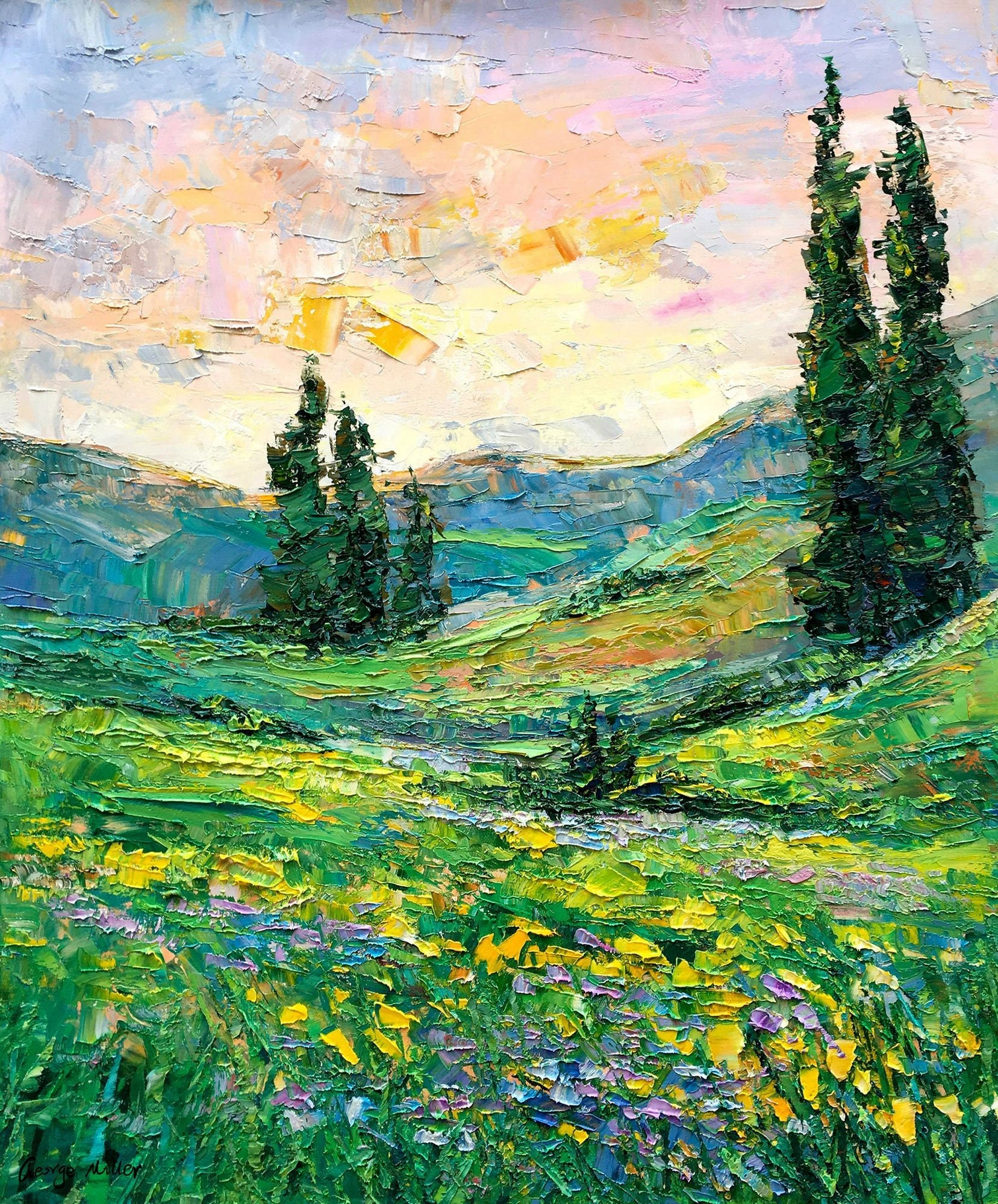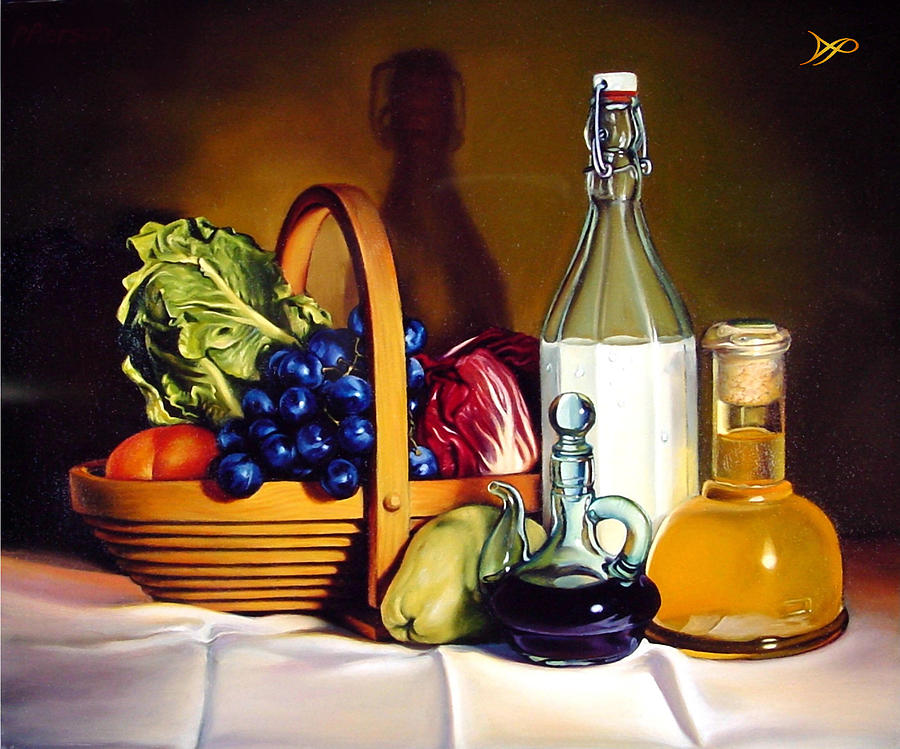Browse Elegant Artwork Oil Paintings for Sale Today
Browse Elegant Artwork Oil Paintings for Sale Today
Blog Article
Discovering Everything About Oil Paints: An Overview to Understanding Their Beauty and Worth
Oil paintings have mesmerized audiences for centuries, supplying a glance right into the artistic proficiency of different eras. Their rich history is intertwined with ingenious techniques and extensive psychological expression. Recognizing the products and techniques behind these artworks can improve gratitude. Additionally, the marketplace for oil paintings provides possibilities for enthusiasts and investors alike. As one explores this remarkable world, the question emerges: what makes an oil painting truly beneficial?
The Background of Oil Paint: A Journey Through Time
Although oil paint has origins that date back to old times, it genuinely grew during the Renaissance, when artists found its versatility and abundant shade potential. Early examples can be traced to the 7th century, with methods evolving especially throughout cultures. The tool became noticeable in Northern Europe in the 15th century, specifically through the jobs of artists like Jan van Eyck, who originated its usage for comprehensive realism and lively colors. This duration noted a separation from tempera paints, allowing for greater depth and structure. As oil painting spread, it influenced countless artists, leading to work of arts by popular numbers such as Leonardo da Vinci and Rembrandt. The tool's heritage continues, forming the art globe well right into contemporary times.
Understanding Oil Paints: Materials and Techniques
As artists check out the world of oil paints, they encounter a varied range of products and strategies that define this medium. The key elements of oil paint include pigments, which supply shade, and drying oils, such as linseed, that bind the pigments and facilitate application. Numerous additives can customize the paint's structure and drying time, boosting versatility. Methods like glazing, where transparent layers are developed, and impasto, which involves using thick paint, allow for different aesthetic effects. Furthermore, the use of brushes, combination blades, and also fingers can create unique structures and coatings. Comprehending these techniques and materials enables musicians to totally reveal their creative thinking and attain the preferred effect in their art work.
The Function of Color in Oil Paintings
Color plays a pivotal function in oil paints, influencing both visual charm and emotional vibration. Comprehending color theory fundamentals, including the partnerships in between colors, can improve a musician's capacity to communicate state of mind and environment. Furthermore, understanding shade blending methods enables for higher deepness and richness in a painting's palette.

Color Concept Basics
Recognizing shade concept is essential for musicians collaborating with oil paints, as it creates the foundation for producing unified and visually appealing structures. Color concept incorporates the research study of just how colors communicate, the shade wheel, and the relationships in between primary, second, and tertiary shades. Artists use complementary shades to boost contrasts and create centerpieces, while similar shades advertise unity and cohesiveness within an item. In addition, the principles of cozy and cool shades affect the perception of depth and space in a paint. Understanding these principles enables musicians to adjust color properly, leading the customer's eye and interacting their intended message. Mastery of shade concept ultimately enriches a musician's capability to convey emotions and ideas with their job.
Psychological Impact of Color
The emotional influence of color in oil paintings plays an essential role in just how visitors view and link with artwork. Colors evoke specific feelings and state of minds, influencing the viewer's emotion. Warm hues like reds and oranges can develop a feeling of warmth and energy, while amazing tones such as blues and greens commonly evoke calmness or self-contemplation. Artists purposefully select shade combinations to improve narrative elements, guiding the audience's emotional trip. The saturation and comparison of colors better amplify these effects, attracting interest and creating emphasis. Ultimately, the interplay of colors in oil paints not just improves their aesthetic charm yet also acts as an effective medium for emotional expression, improving the audience's experience and interpretation.
Shade Mixing Techniques
While numerous aspects of oil painting add to the general make-up, understanding color blending strategies is crucial for accomplishing preferred effects and depth. Shade blending can be come close to through various approaches, consisting of the subtractive and additive processes. Additive blending includes integrating shades of light, while subtractive blending relies upon pigments, where colors mix to produce new shades. Artists typically use a limited combination to create unified works, understanding the partnerships in between main, additional, and tertiary shades. Techniques such as glazing and scumbling even more boost deepness and luminosity. By masterfully mixing colors, an artist can evoke feelings, produce focal factors, and attain a feeling of realistic look, eventually elevating the painting's psychological and aesthetic influence.
Famous Oil Painters and Their Iconic Functions

Well known for their mastery of color and technique, oil painters have actually created some of one of the most well known artworks in background. Prominent musicians like Vincent van Gogh astounded audiences with his stirring brushwork in "Starry Evening," while Claude Monet's "Perception, Sunrise" laid the groundwork for Impressionism. Leonardo da Vinci's "Mona Lisa" remains a long-lasting sign of artistic wizard, showcasing his ability in recording human expression. On the other hand, Rembrandt's "The Night Watch" shows his cutting-edge use light and darkness. Various other notable numbers include Pablo Picasso, that revolutionized modern-day art with his vibrant experimentation in jobs like "Les Demoiselles d'Avignon," and Georgia O'Keeffe, whose vibrant representations of landscapes and flowers helped define American modernism. Each artist's one-of-a-kind design contributed greatly to the oil painting landscape.
Exactly how to Examine the High Quality of an Oil Paint
Assessing the quality of an oil painting entails a mindful assessment of craftsmanship methods, along with an evaluation of color and structure. Observing brushwork, layering, and the application of paint can reveal the artist's ability degree. In addition, the interplay of colors and the general setup of components contribute substantially to the paint's aesthetic value.
Assessing Workmanship Strategies
A meticulous assessment of workmanship methods is vital for figuring out the quality of an oil paint. Evaluators ought to first check out the application of paint; thick, distinctive brushstrokes may suggest a proficient hand, while overly consistent applications could indicate an absence of depth. oil paintings for sale. The layering method is likewise vital; the presence of glazes and differed density can boost luminosity and complexity. Additionally, the high quality of the materials made use of, such as the canvas and pigments, plays a significant function in resilience and total visual. Focus to information in elements like edges and changes in between shades mirrors the musician's dedication to their craft. Eventually, these strategies add to the painting's emotional influence and market price, functioning as signs of the musician's skill and intent
Evaluating Color and Composition
While examining the quality of an oil paint, one should concentrate on the interaction of shade and make-up, as these elements are fundamental to the artwork's total effect. Color choices can stimulate feelings and establish state of mind; as a result, the artist's combination must be checked out for consistency and comparison. A well-balanced make-up guides the audience's eye and develops a feeling of unity. Musicians typically use strategies like the policy of thirds or leading lines to boost aesthetic rate of interest. Additionally, making use of light and darkness can add depth, boosting the three-dimensionality of the paint. Inevitably, an effective oil paint marries color and composition, involving the viewer and welcoming a deeper gratitude of the musician's vision and method.
Taking care of and Preserving Oil Paintings
Correct treatment and conservation of oil paintings is essential for maintaining their integrity and longevity. To safeguard these art work, it is essential to present them away from straight sunlight, which can cause fading and staining. Keeping a steady environment with controlled temperature level and humidity further aids in stopping damages. Cleaning up ought to be done gently using a soft, completely dry cloth, staying clear of any type of extreme chemicals that could hurt the paint or varnish. Normal evaluations for indications of degeneration, such as fracturing or flaking, are recommended. When storing or moving oil paints, correct cushioning and framing are needed to avoid physical damage. Inevitably, persistent treatment adds to the visual allure and worth of oil paintings gradually.
The Marketplace for Oil Paints: Accumulating and Spending
Comprehending the marketplace get more info characteristics for oil paintings is crucial for enthusiasts and financiers alike. The value of these artworks is affected by different elements, consisting of the artist's online reputation, historical importance, and existing patterns. Collection agencies often look for items that reverberate personally while taking into consideration prospective admiration in value. Galleries and public auctions work as primary places for trading, with rates rising and fall based upon need and rarity. Buying oil paintings requires research study into the marketplace, in addition to an understanding of authenticity and provenance. Furthermore, arising musicians may offer possibilities for substantial returns, while established names can command high costs. Generally, a tactical approach to gathering can produce both visual pleasure and monetary rewards.

Regularly Asked Concerns
What Are the Environmental Influences of Oil Paint Materials?
The environmental effects of oil paint products include the release of unstable natural compounds (VOCs), dangerous waste generation, and resource removal for pigments. These elements add to contamination and ecological destruction, raising issues among eco aware musicians and customers.
How Do Various Canvases Affect Oil Painting Results?
Different canvases affect oil painting results considerably. Surface, texture, and absorbency quality can modify paint application, drying out times, and color vibrancy. Artists commonly pick specific canvases to achieve wanted impacts and enhance their creative expression.
Can Oil Paintings Be Recovered if Damaged?
Oil paintings can undoubtedly be recovered if damaged. Expert conservators make use of various methods to fix tears, tidy surface areas, and address discoloration, guaranteeing that the artwork maintains its initial appeal and value for future generations.
What Are the Indicators of an Original Oil Paint?
The indications of an original oil painting consist of noticeable brush strokes, structure variations, and an irregular canvas weave (oil paintings for sale). Furthermore, authenticity may be validated via provenance, trademarks, and the presence of a varnish layer special to oil tools
Exactly How Has Innovation Influenced Modern Oil Paint Techniques?
Technology has actually substantially affected modern-day oil paint methods by presenting electronic devices for preparation, improved products for appearance and longevity, and online systems for sharing and marketing art, thereby broadening artists' imaginative opportunities and target market reach. Oil paint has origins that date back to old times, it really grew throughout the Renaissance, when musicians found its flexibility and rich color possibility. The psychological influence of color in oil paintings plays an essential role in exactly how customers link and view with artwork. While lots of facets of oil paint add to the general composition, understanding shade blending methods is crucial for achieving desired results and depth. Examining the high quality of an oil paint includes a careful assessment of craftsmanship strategies, as well as an evaluation of shade and structure. While evaluating the quality of an oil painting, one must concentrate on the interaction of shade and structure, as these elements are fundamental to the artwork's general influence.
Report this page